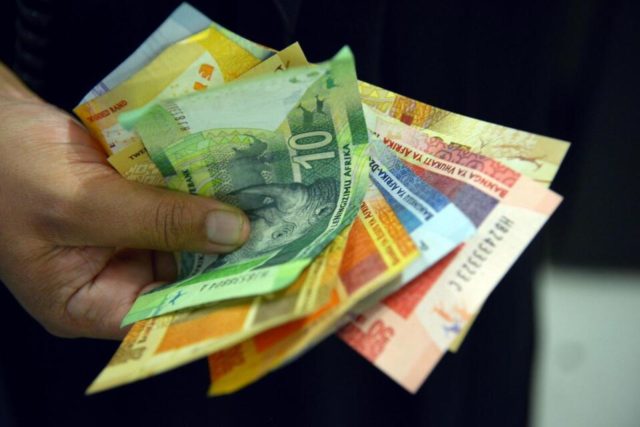On top of rising interest rates and South Africans set to pay more on their loans in coming months, the JSE fell on Monday, taking with it the rand and stock prices amid rising fears of a global recession.
Rising investor fears of a global recession.
ON TOP of rising interest rates and South Africans set to pay more on their loans in coming months, the JSE fell on Monday, taking with it the rand and stock prices amid rising fears of a global recession.
The rand on Monday breached the psychological R18 to the dollar mark, plunging to a low of R18.10, the lowest level since May 2020, on concerns of a global economic slowdown.
According to at least one analyst, the local currency could possibly touch the R19.00 to the dollar mark, as growing recession worries continue to spook investors into seeking the safety of the greenback.
Risk assets, including equities, emerging market portfolio assets and emerging market currencies, fell as investors moved increasingly into safe haven investments.
Anchor Capital co-chief investment officer Nolan Wapenaar said the financial markets were surprised and roiled by the UK’s budget, which appeared to be doubling down on tax cuts as the way to lift their economy out of the current downturn.
Wapenaar said the financial markets were not buying that tax cuts could overcome some structural challenges in the UK, and this sparked the recent sell-off in financial markets and fixed income.
This also comes just after the US Federal Open Market Committee (FOMC) raised interest rates by 0.75% and reiterated their commitment to higher for longer in order to break the inflation up trend.
“The higher for longer rhetoric has the market questioning valuations of different asset classes and we have seen some swift sell-offs and dollar strength, moving the rand to R18.00,” Wapenaar said.
“We think that the risk of a recession has clearly risen, though it certainly is not a foregone conclusion.
“There is more possible downside should the world’s economy face a hard landing, though at current levels we think that much of this is already in the price.”
The world economy is now confirmed to slow more than anticipated due to disruptions to energy supplies as a result of the war in Ukraine and the generalised tightening of monetary policy as inflation remained high for longer than expected.
The Organisation for Economic Co-operation and Development (OECD) yesterday slashed the global economic growth forecast to 2.2% in 2022, revised down from a June forecast of 2.8%.
TreasuryONE head of exchange rate risk management Wichard Cilliers said recession risk fears were high on everyone’s radar currently.
Cilliers said the irony was that all the printing of money to try and keep economies going was coming back to haunt everyone, and so R19.00 on the USD/ZAR exchange rate was certainly a possibility.
“The fact is the more money goes around the easier it is for inflation to take hold, not just in product prices, but asset price inflation, like housing prices going through the proverbial roof,” Cilliers said.
“Rising interest rates will leave the consumer with less money in their pockets and less spending to help the economy, but it will help inflation in the long run.
“The rand and its peers will probably be in for a torrid time as market participants will rather be in the safety of the dollar than any other currency.”
The US dollar continued to power ahead, driven by high levels of risk aversion in global financial markets as recession fears grow.
Gold prices also fell to their lowest level in two-and-a-half years yesterday, weighed down by a strong dollar amid the Fed’s hawkish stance on interest rate.
Investec chief economist Annabel Bishop said bear markets were looming as the Fed is seen as hiking the global economy into recession by 2023, while the largest economic area, the EU, was believed to have already fallen into recession in the first half of 2022.
Bishop said the implications of this were for higher interest rates in South Africa after the SA Reserve Bank hiked its repo rate by 75 basis points to 6.25% last week, following in the footsteps of the US Federal Reserve (Fed).
“That is, our interest rate expectations have risen as the Fed signals another 1.50% in hikes from here, changing our view to one of the repo rate ending at 7.00% (the prime lending rate at 10.50%) this year, and the repo rate rising to 7.50% in January 2023,” Bishop said.
“The terminal rate is now expected at 7.50% at the start of next year (the highest interest rate in the current upwards interest rate cycle). In an interest rate cycle the level reached by the last rate change is the terminal, or end point interest rate in the cycle.”
– BUSINESS REPORT








